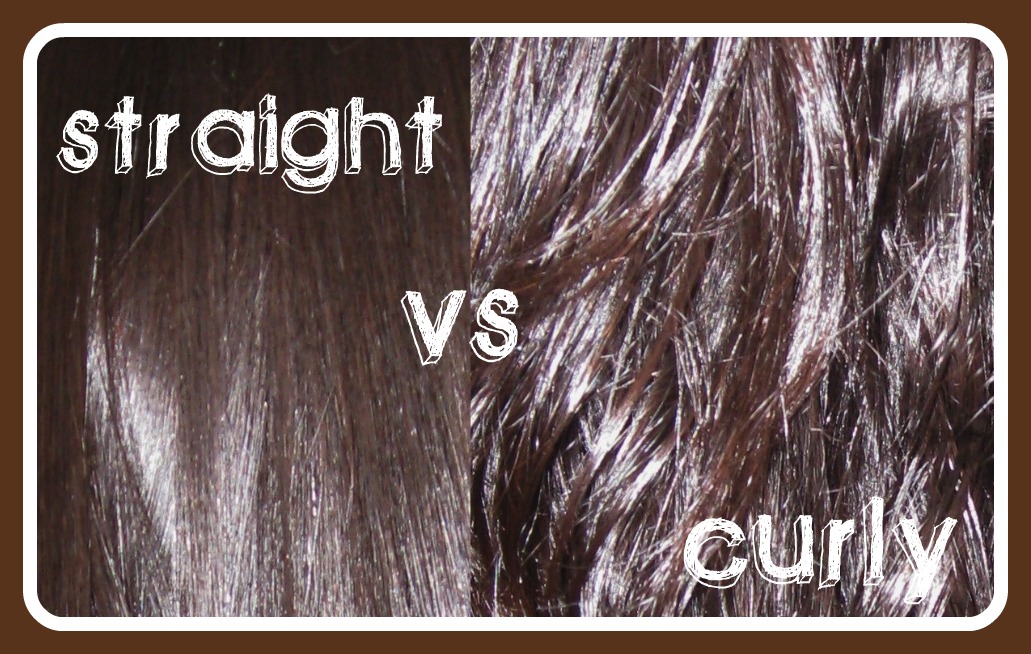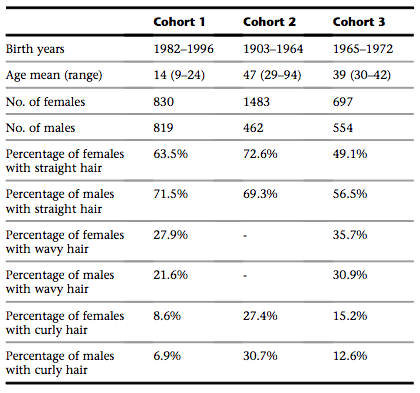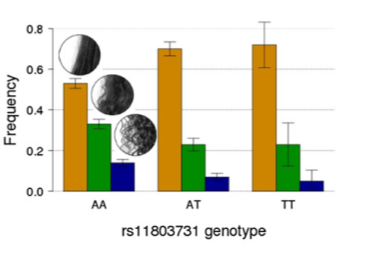
This website was produced as an assignment for an undergratuate course at Davidson College
Home safsaCurly Hair Gene dsafPaper Review 1sdaf Paper Review 2

Background safsaScientific Articles dsafPopular Presssdaf References
What Have Scientists Discovered?
Although we knew that follicle shape determines hair texture, only recently have some potential genetic causes of follicle shape been discovered. In October of 2009, Medland et al. reported the results of their study on the heritability of hair curliness in twins of european ancestry. They found that curliness is highly heritable (85-95%). With the same large population of twins, Medland et al. reported the association between straight hair and the trichohyalin gene in November of 2009.
As shown in Figure 4 , the twins were divided into three cohorts which were determined by birth year. Cohorts 1 and 3 reported whether their hair was curly, wavy or straight, while individuals in cohort two simply chose between curly and straight.

Image From Medland et al.
Figure 4: Characteristics of the three cohorts. Subjects were divided in cohorts based solely upon their year of birth.
Medland et al. performed genome wide linkage analysis, looking for SNP's that they could associate with a specific type of hair texture. They found quite a few, across a large number of chromsomes (Figure 5). Given the large number of SNPs present on chromosome 1, Medland et al. decided to focus their attention on that chromosome (Figure 6). Most of the SNPs fell within 1.q21.3, including the four most high correlated SNPs (rs17646946, rs11803731, rs4845418, and rs12130862).

Image From Medland et al.
Figure 5: Manhattan plot of the results of a genome wide meta-analysis. SNPs with a p<10^-5 are highlighted in green.
Image From Medland et al.
Figure 6: The q21.3 region of Chromosome 1. The four SNPs with the highest linkage are labeled and shown in the correct location. The most associated SNP is shown in blue, while the rest are red. Beneath the SNPs are genes, exons are represented by vertical bars. On the right hand axis is a plot of the recombination rate of the region.
They looked into the regions surrounding each SNP to determine which were the most likely candiates (Figure 7). Many of the SNPs fell within non-coding genes, introns, or were intergenic. Although rs17646946 is the most associated SNP, it is upstream of the TCHH gene, therefore Medland et al. shifted their focus to rs11803731, which is within the coding, nonsynonymous third exon of TCHH.

Image From Medland et al.
Figure 7: The four most associated SNPs, all of which are found on chromosome 1 in the q21.3 region.
Medland et al. discovered that rs11803731 has two primary alleles, T and A. The T allele is the derived state, and is heavily concentrated in Europe and west-central Asia. The variation between the alleles comes at position 790 of the TCHH protein, trichohyalin. In the position a leucine is replaced by a methionine. The replacement is outside of alpha-helical regions and therefore Medland et al. hypothesize that either the surface exposed methionine is oxidized by a reactive oxygen species at some point post-translation which could result in altered protein regulation or it may cause structural variation
What is Trichohyalin?
Trichohyalin is a protein that is expressed in the inner root sheath cells of the hair follicle. Another group, Steinert et al., had previously determined that tichohyalin performs three major mechanical functions in the hair follicle, which ultimately strengthen it. First, trichohyalin is able cross-link to itself as well as to the keratin filaments. Second, trichohyalin is also able to cross-link to to other proteins in the inner sheath. Third, it helps create linkage between keratin filaments and cellular envelopes.
What Were the Authors Able to Conclude?
Ultimately the authors attributed about 6% of variance to the TCHH gene. They found that with more T alleles the proportion of straight hair increases (Figure 8). However having two T alleles, does not guarantee straight hair, nor does the absence of any T alleles prevent straight hair.

Image From Medland et al.
Figure 8: Frequency of straight (orange), wavy (green), and curly (blue) hair as a function of the rs11803731 genotype.